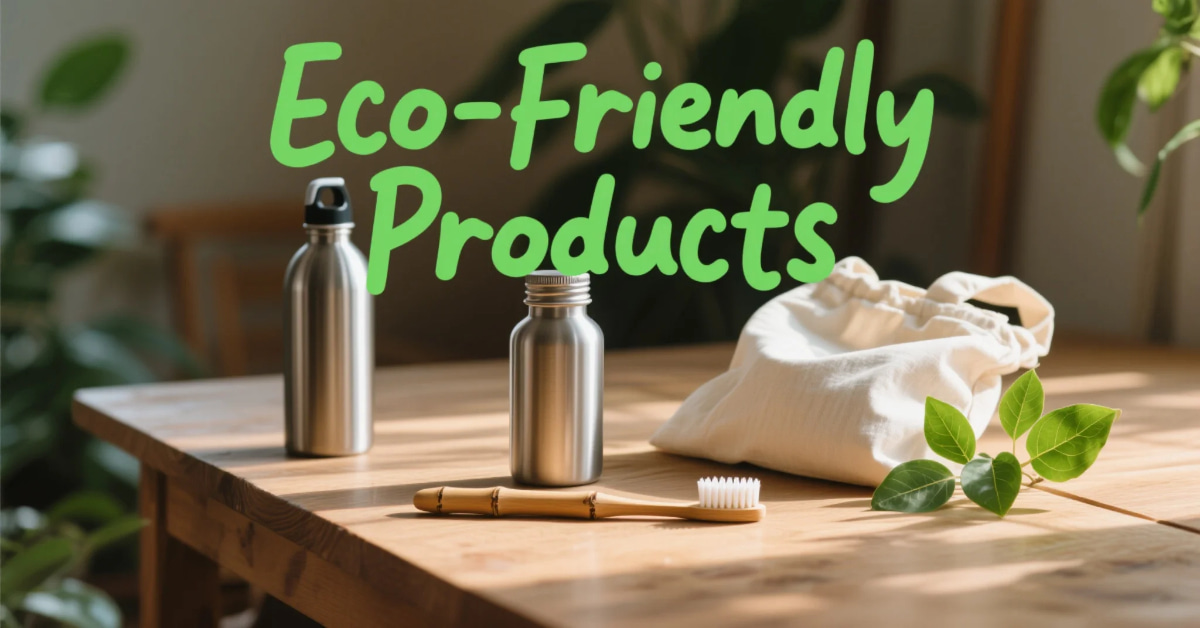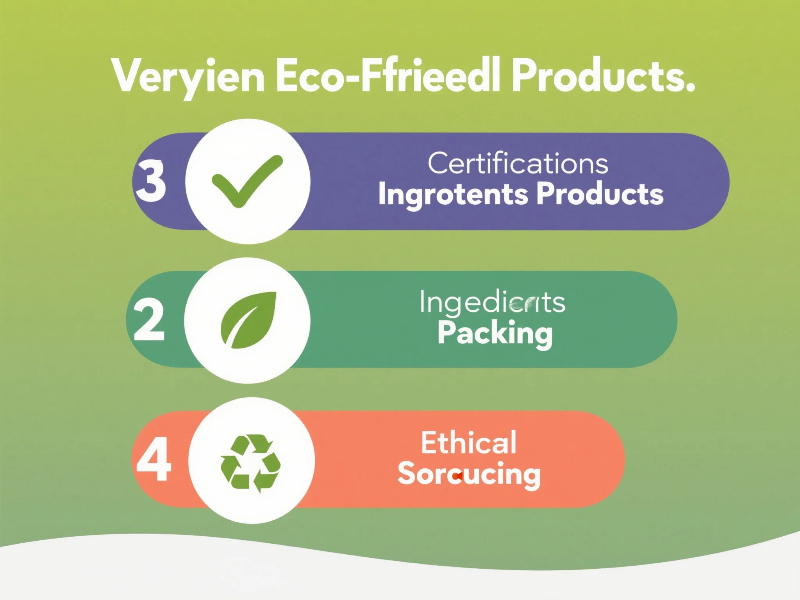How to Identify Truly Eco‑Friendly Products: A Buyer’s Guide

Eco-friendly products today is essential for responsible consumers seeking sustainable, low-impact alternatives in everyday life. Many brands claim eco-status, yet few are authentic Eco-Friendly Products. This guide explains how to identify genuine Eco-Friendly Products, examine certifications, verify ingredients, evaluate packaging, and make conscious purchasing decisions supporting global sustainability goals. By following these steps, consumers in the USA, Canada, UK, and Europe can confidently purchase products, minimizing environmental harm and promoting ethical supply chains.
Why Eco-Friendly Products Matter
In the modern world, consumers are increasingly prioritizing eco-friendly products to reduce their carbon footprints and promote environmental health. Sustainable products prevent water pollution, limit greenhouse gas emissions, and conserve natural resources. Genuine Eco‑Friendly Products improve air quality, protect wildlife, and encourage ethical production methods globally. Many buyers search for green products, sustainable products, and biodegradable products to align their daily purchases with personal values and international sustainability standards. Choosing certified Eco‑Friendly Products promotes fair labor, ethical sourcing, and global environmental responsibility.
Common Misleading Claims & Greenwashing: Eco-Friendly Products
Unfortunately, many products are greenwashed, appearing sustainable but lacking genuine certifications. Claims like “all-natural” or “eco-friendly” may mislead consumers about Eco‑Friendly Products. Transitional phrases such as “however” and “therefore” help readers evaluate claims carefully. Always check labels, certifications, and ingredient transparency to ensure the product meets Eco‑Friendly Products standards. Avoid items with vague marketing terms, unclear sourcing, or unverified sustainability claims. Verified certifications indicate low-impact production, safe materials, and responsible packaging. This careful analysis ensures consumers select truly beneficial Eco‑Friendly Products for sustainable lifestyles.
Criteria to Identify True Eco-Friendly Products
To select reliable Eco‑Friendly Products, follow these four criteria:
3.1 Ingredient Transparency & Certifications: Eco-Friendly Products
Look for products that fully disclose ingredients, avoiding harmful substances like BPA, phthalates, or formaldehyde. Certifications such as USDA Organic, FSC, Green Seal, and Cradle to Cradle validate claims and confirm safe, low-impact production. Verified Eco‑Friendly Products ensure safer use, ethical sourcing, and environmental sustainability. Consumers should cross-check claims using official certification databases or recognized eco-label directories. Ingredient transparency and credible certification remain key indicators of authentic Eco‑Friendly Products, making responsible shopping easier and more effective worldwide.
3.2 Life Cycle Impact & Carbon Footprint
Authentic Eco‑Friendly Products consider the full life cycle: raw material extraction, production, transport, usage, and disposal. Carbon-intensive processes reduce sustainability even if a product appears green. Choose items with low energy consumption, minimal transport impact, and responsible sourcing. Life cycle evaluation ensures purchased Eco‑Friendly Products genuinely reduce environmental harm. In addition, consumers can compare products using life cycle analysis tools or databases to verify eco-impact. By analyzing the complete life cycle, buyers in the USA, Canada, the UK, and Europe can confidently select authentic Eco‑Friendly Products.
3.3 Packaging & Recyclability
Even sustainable formulas fail if packaging harms the environment. True Eco‑Friendly Products use recyclable, compostable, or reusable containers with minimal materials. Avoid multilayer plastics and non-recyclable packaging, as these increase waste and carbon footprint. Consumers should prioritize brands that clearly label recyclability or compostability, reinforcing ethical sustainability practices. Proper packaging reflects a product’s commitment to the environment and confirms its status as an authentic Eco‑Friendly Product. Packaging evaluation complements ingredient verification, ensuring overall environmental responsibility.
3.4 Ethical Sourcing & Labor Practices
Sustainability extends beyond environmental impact; ethical sourcing ensures fair labor, biodiversity protection, and responsible harvesting. Verified Eco‑Friendly Products respect workers’ rights, provide fair wages, and reduce ecological disruption. Certifications such as FSC or Fair Trade demonstrate compliance with international ethical standards. Buyers should research supplier practices and confirm alignment with sustainability claims. Ethical sourcing ensures the product is truly Eco‑Friendly Products while promoting global social responsibility. Consumers benefit when their purchases support fair labor and environmentally conscious practices simultaneously.
Examples of Trusted Eco‑Friendly Products
Here are widely recognized, genuine Eco‑Friendly Products:
- Bamboo toothbrushes (biodegradable, non-toxic)
- Reusable stainless steel water bottles
- Organic cotton tote bags
- Plant-based biodegradable cleaning sprays
- Compostable food containers from bagasse or PLA
These items represent authentic Eco‑Friendly Products, green products, sustainable products, recyclable products, and non-toxic products. Consumers should look for certifications, low-impact materials, and ethical sourcing to ensure authenticity. Using LSI keywords naturally enhances SEO while maintaining readability for USA, UK, Canada, and Europe-based audiences.

Tools & Apps to Verify Eco Claims
Consumers can verify eco-claims using these helpful tools:
- ThinkDirty: evaluates cosmetics for harmful ingredients
- EWG Skin Deep: rates personal care products for safety and sustainability
- GoodGuide: assesses environmental and social impact
- Ecolabel Index: lists certified eco-friendly products globally
- Barcode/QR code scanners: confirm certifications and ingredient transparency
These resources help users identify authentic Eco‑Friendly Products, avoid greenwashing, and make sustainable purchases with confidence. Additionally, apps enable comparisons and rating checks before committing to a product.
FAQs About Eco‑Friendly Products
Q1: Are all natural products eco-friendly?
A1: No. Natural does not guarantee low carbon impact, recyclable packaging, or ethical sourcing, even for marketed Eco‑Friendly Products.
Q2: Can inexpensive products be eco-friendly?
A2: Sometimes yes, but authentic Eco‑Friendly Products often cost slightly more due to certifications, sustainable sourcing, and ethical labor practices.
Q3: How can I verify eco-friendly claims?
A3: Use certification databases, ingredient lists, and apps like ThinkDirty or Ecolabel Index to confirm product authenticity.
Q4: Where can I buy trusted Eco‑Friendly Products?
A4: Look for certified retailers, official brand websites, and specialized green online stores in the USA, UK, Canada, and Europe.
Conclusion & Call to Action
Choosing authentic Eco‑Friendly Products empowers consumers to support environmental sustainability, ethical sourcing, and low-impact lifestyles. Use certifications, ingredient checks, packaging evaluation, and ethical sourcing as criteria. Start by replacing one conventional item with a verified Eco‑Friendly Product today. Share this guide with friends and family to encourage responsible consumption.
CTA:
Related
Discover more from Ecofriendly
Subscribe to get the latest posts sent to your email.


